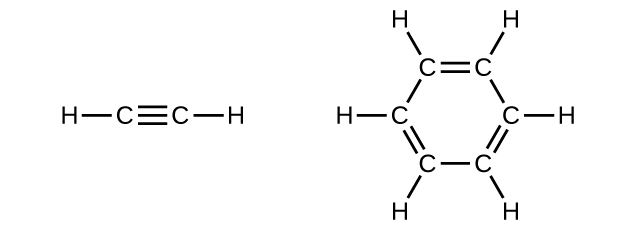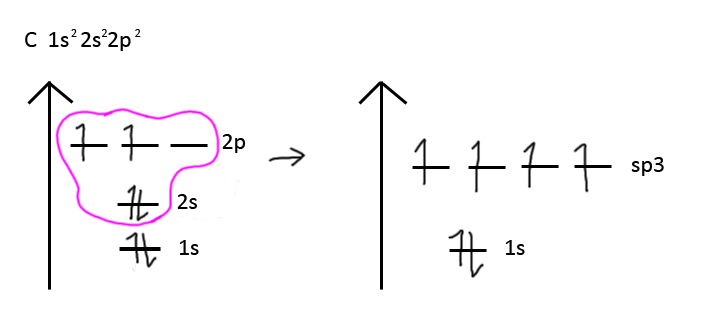2.7 VSEPR, Bond Hybridization, and Molecular Geometry
3 min read•august 23, 2020
Dalia Savy
A
Anika P
AP Chemistry 🧪
269 resourcesSee Units
Valence Shell Electron Pair Repulsion (VSEPR)
Lewis structures can determine properties such as geometry, bond orders, bond lengths, and dipoles for molecules. The Valence-Shell-Electron-Pair-Repulsion (VSEPR) theory can predict molecular geometry by minimizing electron electron repulsion.
Notes
You should definitely memorize the table below for the AP Exam. Once you practice, the questions that involve the VSEPR Theory become free points🥳!
Let's go over what each column means:
- Family - think of family as how many groups of atoms or molecules branch off the middle atom (number of x + number of e in the general formula).
- General Formula - made up of three parts:
- M = middle atom
- X = attached atoms
- E = lone pairs
- Electron Domain Geography - gives you an idea of what the molecule looks like. It shows where the electrons or atoms are in relation to the middle atom, M.
- The graph below also includes angle measures that you should be aware of.
- Shape - This is the main column that you should memorize and learn to associate with the general formula, electron domain geography, and hybridization.
- Hybridization - You only have to memorize the hybridization of family 2, 3, and 4🧠.
VSEPR
Bonding
Sigma and Pi Bonds
Sigma (σ) bonds are covalent bonds where electrons are found shared on the internuclear axis. Hybrid orbitals form σ bonds, and they are stronger than π bonds.
Pi (π) bonds are covalent bonds where orbitals are perpendicular📐 to the internuclear axis. Unhybridized orbitals form π bonds.
You don't really have to know these definitions, but be aware of the following:
- A single bond is made up of 1 σ bond.
- A double bond is made up of 1 σ bond and 1 π bond.
- A triple bond is made up of 1 σ bond and 2 π bonds.
The more pi bonds in a molecule:
- The higher the bond energy
- The shorter the bond length
Examples
Count the number of σ bonds and the number of π bonds in the following two structures:

Image Courtesy of BC Open textbooks
In the molecule on the left, there is 1 triple bond and 2 single bonds. 1 triple bond is made up of 1 σ bond and 2 π bonds, while the single bond is only made up of 1 σ bond. Therefore, in total, there are 3 σ bonds and 2 π bonds in this molecule.
In the molecule on the left, there are 3 double bonds and 9 single bonds. This means this molecule is made up of 12 σ bonds and 3 π bonds.
Hybridization
Hybridization is the idea that atomic orbitals fuse to form newly hybridized orbitals, which in turn, influences molecular geometry and bonding properties. Hybridization is also an expansion of the valence bond theory💥.
There are 5 main hybridizations, 3 of which you'll be tested on: sp3, sp2, sp, sp3d, sp3d2. For these hybridizations, electron orbitals fuse together to fill subshells and go to a lower energy state. It also allowed for things like CH4, since technically the way the electron pairs are organized, 4 sigma bonds would not be possible.

In the above example, carbon's 2p and 2s orbitals fuse into 4 half filled sp3 orbitals that can make 4 sp3-orbital sigma bonds. The same principle applies for the other hybridizations.
Browse Study Guides By Unit
⚛️Unit 1 – Atomic Structure & Properties
🤓Unit 2 – Molecular & Ionic Bonding
🌀Unit 3 – Intermolecular Forces & Properties
🧪Unit 4 – Chemical Reactions
👟Unit 5 – Kinetics
🔥Unit 6 – Thermodynamics
⚖️Unit 7 – Equilibrium
🍊Unit 8 – Acids & Bases
🔋Unit 9 – Applications of Thermodynamics
✏️Frequently Asked Questions
✍️Free Response Questions
🧐Multiple Choice Questions
📆Big Reviews: Finals & Exam Prep

Fiveable
Resources
© 2023 Fiveable Inc. All rights reserved.